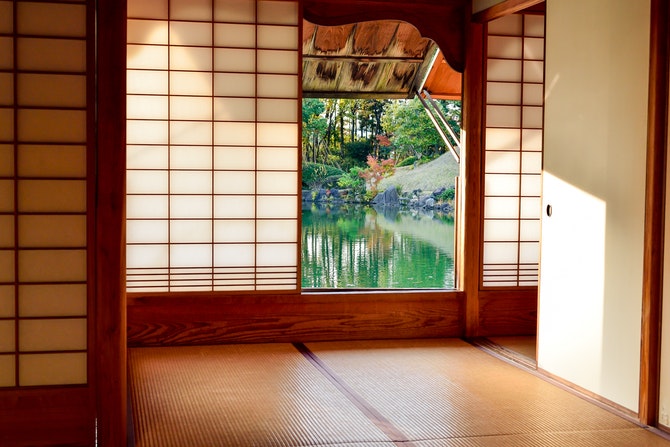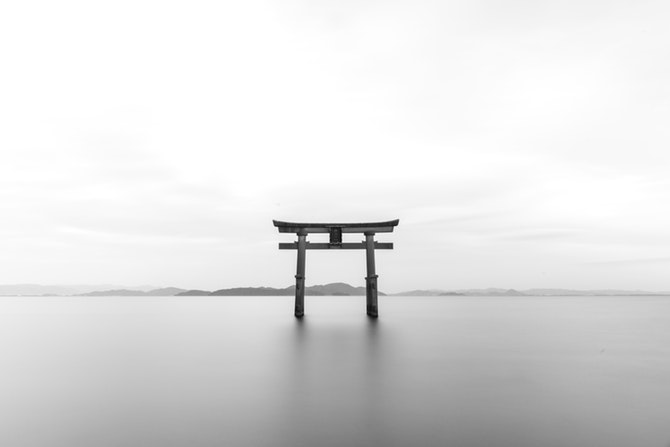How to Breathe: Simple Reiki Techniques to Bring Balance & Harmony to Your Chakras

It all starts with the breath.
From the moment we are born, our lungs fill in with air and take in the energy from the world around us.
Many positive moments, memories, and emotions rise and fall with the breath. After all, our Chakras align with the direction of the breath as the air flows in and out of our body.
However…
...years of sitting, stress, anxiety, exhaustion, and overwork have siphoned our natural ability to breath.
In fact, the inability to breath is one of the leading causes of dysfunctional health, mobility issues, and imbalanced Chakras.
Many people overlook this because our body system is designed to breathe automatically.
But being unconscious of the way you breathe can lead to more harm than good. It can take years for many normal people to nullify the damage that has already been done.
Fortunately, Reiki studies and modern science have shown exactly what we can do to restore balance into our lives with simple techniques and tests.
In today’s blog post, I’m going to show you how to change your life for the better with diaphragmatic breathing. I’ll also share my personal Chakra Breath Test with you so that you can continually improve on your energy intake.
Ready? Let’s begin…
The Chakra Breath Test (CBT)
As one of the first steps healers learn in Reiki, breathwork is one of the most beneficial ways to improve your Reiki practice. However, it’s also one of the most forgotten as people go into more advanced studies.
If you forget how to breathe properly, you’ll never be able to heal yourself or your patients. Don’t attempt a healing session until you know the exact process that works for you.
The following techniques will increase your ‘Chakra Awareness’ so that you are more sensitive to the energies that healers access to heal. As a positive side effect, you’ll also be able to invoke the power of Universal Energy in a much more efficient manner.
But before we get into the process of breathwork, remember that the best way to use these techniques is to try them on yourself. To see how they actually work and affect you, you need to administer a short and simple self Chakra Breath Test or CBT.
As a tool to measure your breathing volume and energy intake, the CBT is a Reiki derivative of the Body Oxygen Level Test or BOLT.
Dating back to 1975, researchers developed a way to measure one’s relative breathing volume and determined a simple test that would illustrate a precise measurement for healthiness in adults.
In short, the ideal BOLT number was tested time and time again to be 40 seconds. To avoid being too scientific, the lower the BOLT score, the greater the breathing volume, which means that you intake more oxygen than you need to.
In the CBT, this means that you are intaking much more energy than you need to. Our clockwise spinning Chakras are not meant to handle such inordinate amounts of energy.
Remember that as you breathe in, you take in everything that comes with it, including pollutants, carcinogens, etc...all of which can severely affect the ways your Chakra(s) function.
So how do you self-test the CBT?
Measure Your CBT NOW
To obtain an accurate measurement, it’s best to rest for seven minutes before measuring your CBT value (one minute for each Chakra).

Read the instructions carefully first and make sure that you have a timer on hand.
Instructions:
Take a normal breath (not a deep one) in through your nose and allow a normal breath out through your nose.
Hold your nose with your fingers to prevent excess energy from entering your lungs.
Time the number of seconds it takes until you feel the first definite desire to breathe, or the first stresses of your body urging you to breathe. These sensations include the need to swallow, a constriction in the throat, or involuntary contractions in the upper and lower stomach.
Release your nose, stop the timer, and breathe in through your nose. Your inhalation at the end of the breath hold should be normal.
Do this three times in a row and average your values from each time. Remember to stop the timer at the FIRST desire to breath. The CBT is not a ‘how long can you hold your breath’ exercise.
If you find yourself gasping for air or your neck, head, and shoulders move up with the breath or while holding the breath, or you have a lower CBT time than 20 seconds, you may suffer from dysfunctional breathing.
If your CBT value falls between 20-40 seconds, your condition may not be as severe, but you still need major breathwork.
However, this should not be the case for alarm - many people suffer from improper breathing technique, and the good news is that you can reach the optimal level of 40 seconds with practice.
(If you’re interested in guided breathwork, you can access my Guided Healing Sessions Premium Collection here.)
Now that you’ve determined your CBT value...it’s time to work on your breath.
Note: the following techniques may not work for everyone, and there are many others out there. Take the time to do the research so that you can find the practice that suits you the best.
Diaphragmatic Breathing
Most people breathe with their chest...which is anatomically inaccurate.
To test this, take one long deep breath - notice whether your spine, shoulders, neck, head, or chest move upwards.
If they are...it is causing pain to manifest in your life.
You see, the lungs sit below the chest cavity near where the Sacral Chakra lies…
...so breathing into your chest, where your lungs do not retain air, is counterproductive.
In other words, you’re directing energy into the wrong area - the Heart Chakra.
This can cause blood clots, high blood pressure, and even accelerate muscle atrophy.
So the first cause of order is to correct this imbalance.
There are two parts to this:
Breathing with the lungs and Sacral Chakra.
Feeling and visualizing the light of Universal Energy inside you.
Read the following set of instructions and then proceed:
Close your eyes and inhale through the nose at a slow but controlled pace. Visualize the light of Universal Energy enter and pass through each of your Chakras.
Direct your breath to the lower body down to the lowest part of your lungs. Resist the urge to bring your chest, shoulders, or neck up. Visualize the energy like a gas filling up your lungs with positive light.
Notice your belly, back, and sides expanding with this powerful force.
Hold this energy in and let it cleanse your hurting Chakras.
Form a slight o with your mouth and slowly let the air out. Do not exhale too hard - let it escape your body and take all of the negativity with it.
Exhale until your lungs are almost flattened.
This is the correct way to breathe. If you let your breath stop at the chest, the Lower Layer of your Chakras don’t get any of that energy. Conversely, your Upper and Middle Layers receive too much.
Using the visualizations will help you direct this breathe as it cleanses and reorients your Chakras in the right direction.

You may notice the color of the light changing as it passes through each Chakra - that’s okay. It means that the Universal Energy is responding to your individual body and Aura.
Use this as a primer to begin changing the way you breathe in your daily life.
Once you are comfortable with this style of breathing, focus more on the visualization of light and energy as it passes through your body. Noting these subtle differences will help you diagnose others, as you will begin to see patterns and sense energetic disturbances around you.
Once you have mastered Diaphragmatic Breathing, move on to the following advanced Reiki breathing techniques...
Kenyoku-Ho - The Dry Bath
To cleanse your Chakras, Reiki healers make extensive use of the palms of their hands to channel energy into the recipient. When applying this to yourself, you can ‘wash away’ the negativity out from your Chakras.
This method, used by the second generation of Reiki healers, is extremely effective in priming someone for a healing session or to close the day.
Use it as a nighttime ritual before you sleep to recover from the day’s damages.
Instructions:
1) Gently close your eyes and inhale through your nose.
2) With your left hand, place your palm just over your right shoulder.
3) In a smooth & gentle clockwise circles (remember the direction of your Chakras), slowly move your hand diagonally down to the left hip while slowly exhaling.
4) Repeat with the other hand. Take your time - do not rush.
5) After one ‘wash’, practice diaphragmatic breathing for one minute.
5) Repeat steps 1-5 twice more on each side.
Channel The Energy
This breathing exercise will focus on reinforcing the connection between you and the Universal Energy. At this point, you are no longer breathing air - you are physically taking in Reiki energy.
Take your time.
You may not be ready for this exercise if you don’t feel the energy intake.
Once you are prepared to receive the energy directly, let it pass through you as follows:
1) Gently inhale through the nose as you flare your nostrils.
2) Visualize the weight of the positive energy ‘pour’ on top of your scalp and through your Chakras.
3) Take 7 breaths (both inhale and exhale) for each Chakra starting from your Crown.
4) Repeat until you reach the Root Chakra.
5) Once you have completed 49 breaths, continue breathing and imagine the light emanating out from your body and spreading into infinity.
5) Allow yourself to become calm and one with light.
It may take you many times before you can perfect this breathing technique, and that’s okay. The point is not to judge your ability or inability to channel energy - it is to simply respond to the moment.
Heaven and Earth
This is one of the most advanced Reiki breathing techniques one can learn how to master. I myself am still learning how to do this in the most perfect way possible.

Even, so it’s one of my most favorite and powerful techniques that I like to share with my students.
This technique will help you with your Feeling Domain and encourage the corresponding Chakras to be more responsive to physical, emotional, and spiritual touch.
Note: Don’t try this until you’ve mastered The Dry Bath. Your Chakras may feel weak otherwise.
Instructions:
1) While standing with your feet shoulder-width apart, close your eyes.
2) Connect your tongue to your palate without flexing your jaw (this may be a bit tricky, but you want to reinforce the connection between the front and back channels of your Chakra)
3) Slowly raise your arms above your head. Do not flex or remain tense.
4) Inhale deeply through your nose and feel the positive light soak into your fingertips. Hold to the count of three seconds.
5) Exhale slowly as you bring your palms to slowly hover over your head. Hold to the count of three seconds.
6) Follow this pattern for each Chakra.
7) Once complete, raise your hands back to the sky and release the positive light. Inhale and exhale slowly as the light leaves your hands.
8) Relax
If you liked these breathing techniques, you’ll want to get even more helpful techniques to take your Reiki to the next level. If you’re interested, you can check out my Guided Healing Sessions Premium Collection here.
Only if you’re serious about Reiki!



